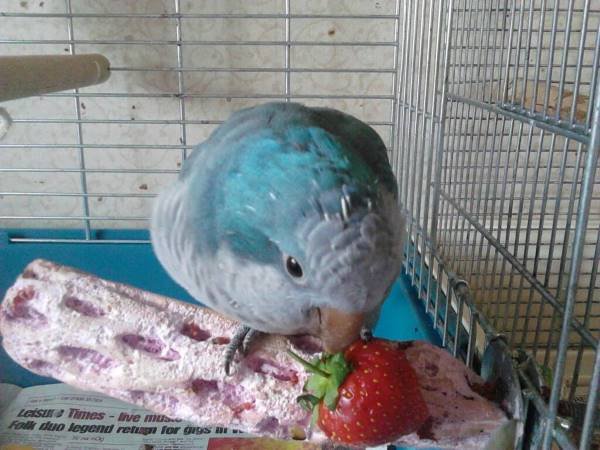The grooming process of your pet involves efforts done by you for maintaining his hygiene and appearance as well as the efforts he puts in for self-grooming.
Yes! You read that right. Your parrot will also take care of his grooming from time to time. Such self-grooming sessions by him are known as preening. Don’t think that he is beauty-conscious like us humans, he has several other essential reasons for such behavior. All these preening reasons end up to be a part of his health-maintaining activities.
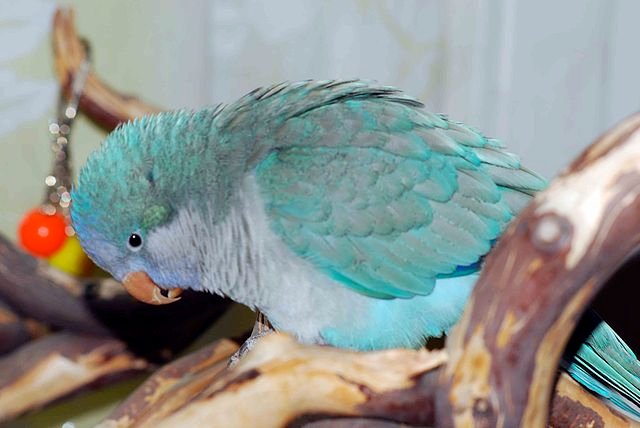
Quaker parrot is using oil from the preen gland
Your pet performs preening for several hours each day by reaching out to each of his feathers with the help of his beak and feet to align his feathers well. He also distributes oil all over to his body during the process after collecting it from his preen gland.
This daily self-grooming performed by your quaker helps him clear-up dirt and dust from his feathers along with removing any parasites from his body. It will also help him align his feathers for a smoother flight, better waterproofing, and insulation.
Pair of Quaker parrots can preen each other
If you pet more than one quaker, you might see them preening each other after they develop a strong friendship over a while. This is a very normal act on their part as it is a way of communication as well as a gesture to show care to each other. It also develops trust in their relationship over time.
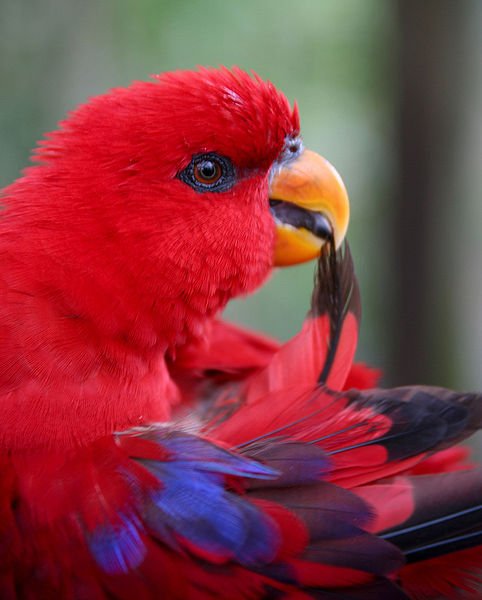
When your parrot is bonded extremely well with you, he will try to preen you as well by stroking his beak in your hair or beard. This shows that he trusts you completely and is happy spending time with you. In case you notice any abnormal behavior in your pet bird’s preening activities, he might be suffering from some physical or psychological problems. In such a case, it is essential to consult a vet addressing your concerns as soon as possible.
Quaker parrot bathing
Grooming your Quaker parrot on your part is an essential activity for maintaining his daily hygiene. Just the way we can’t leave our six-month-old to take a bath on his own, we cannot expect our little parrots to do that on their own, either.
To fulfill his needs of bathing, provide your pet parrot with a shallow dish filled with water regularly. Consider providing water at room temperature as it will help in conditioning his feathers and will maintain his natural body-oil balance.
Bathing is very useful in softening the dirt and pollutants collected by your quaker’s soft body and removing it effectively. It is even more important during molting when he is feeling uncomfortable due to new feathers springing-up through the skin.
During these days, a bath in water infused with essential oils for moisturizing would be a great choice. You can also opt for non-toxic aloe-mists or other natural moisturizing sprays in between the baths if extreme cases of skin-dryness or itching are experienced by your little one.
Some parrots also enjoy showers but you need to check the preferences of yours. If he enjoys it, it is a great way to have fun together in the shower! Many quaker parrots also enjoy building contact with wet leaves. You can try this interesting technique for your pet parrot too.
Just place a few lettuce or kale leaves in the bathing dish before filling it up with water. If he enjoys taking up the water from these leaves and establishing a contact constantly with the greens, include this method in giving a bath to him. It helps him soak nutrients from the greens into his feathers and is a healthier option for him.
A few precautions must be taken for the bathing sessions of your Quaker parrot. Don’t use any soap on his skin unless it is extremely needed to do so, like in case he develops oil layer on his feathers. In such extreme cases too, use only mild soaps with natural moisturizing properties like a glycerine soap. Avoid using anti-bacterial soap on his skin, his dishes, and even his cage as it is toxic for his health.
Please do not scrub his body even mildly as his skin is too soft to tolerate even a gentle scrub. Never try to wash his face while bathing him, leave it on him to do that himself, if he wishes to.
It is not advised to soak your little one’s feathers completely in the water, the bathing dish should only be filled up to a level where the lower half of his body is soaked inside the water. It is because complete feather soaking will cause flight impairment as well as the loss of body heat.
Keep the frequency of bathing to a minimum in winters, if you cannot provide a source of warmth to him immediately after the bath. Bathe him only during daytime hours and ensure that he is completely dry when he retires to sleep, as it will prevent him from catching a cold.
Making quaker parrot comfortable
The foremost thing you shall keep in mind while preparing your parrot for his first grooming session involves his introduction to towels. Every grooming session involves the use of a towel, so he must not be afraid of them. You can make him comfortable with towels from the very beginning.
Most people play a towel game with their parrots when they are very little. It involves holding him in a towel softly and let him find a way out of it himself. It satisfies your young one’s entertainment needs along with making him comfortable with towels.
Clipping Quaker parrot wings
Something I personally would not recommend. And I have never done it to my parrots. If you are a first-time parent to a parrot, you need to get some professional help for clipping the wings of your pet. Visit the veterinary groomer who will introduce you to his specific grooming needs. After carefully observing a few such sessions, you can carry out his wing-clipping on your own, if you feel confident enough to do so.
Do not over-do clipping to completely ban him from flying, you just need to restrict him from full flights for his safety. To ensure that your pet can balance properly, you need to trim both the wings in the same manner. Also, do not attempt to take him outside without a harness or a cage even if clipped, as he might still fly away if he gets nervous or frightened by something.
Nail-clipping for Quaker Parrots
You are also required to take care of your parrot’s nail-clipping sessions. You will again be needing a professional groomer for at least the first nail-clipping session. It is so because your pet’s nails have a nerve and a blood supply. You will be needing some guidance on the nail-length to be trimmed to avoid cutting the nerve of your Quaker parrot.
Once you become familiar with the process, you can easily carry out this task at your home. Do not neglect to cut off your parrot’s nails as longer nails make it difficult for him to perch comfortably. They act as an obstruction when he plays with his favorite toys and they can also injure him by making him stuck somewhere. Additionally, long nails can also develop wounds on your hands when he perches onto your bare hand.
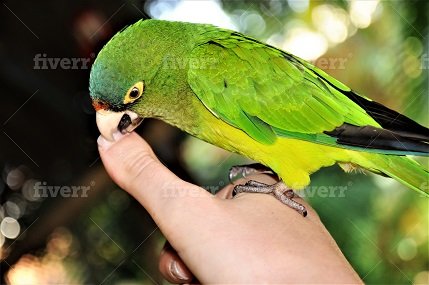
Quaker parrot beak trimming
The beak of your parrot also needs some trimming or else he will face issues while using it. Usually, beak gots trimmed naturaly if parrot is active, and he is using his beak to explore its surroundings. Or if he has cuttlebone in his cage, he will grind cuttlebone, which will help his beak not getting overgrown.
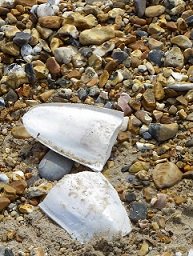
It is a little complicated task so you will be needing a veterinary groomer every time the beak-length needs to get adjusted.
There are, however, some measures you can take to maintain the healthy length of your pet’s beak. Fill his cage or aviary with numerous toys to inculcate chewing habits in him. Place non-toxic chewable parrot toys and natural branches as perches around him. Make him crack his favorite nuts on his while using his beak. On an occasional basis, serve him fruits and vegetables with the skin on, his beak length will be maintained naturally when he tears apart these fruit-skins.
Beak-trimming is usually required in older parrots in case of forming any deformity. Still, you need to consult for its requirement from time to time from the aviary veterinary for younger babies too.
Grooming is a great way to spend time with your Quaker parrot and bond stronger with him. He will start feeling like a family if you take a bath together or file your nails together. Make him feel as special as he is, and he will remain happy forever.
Next to read:
Everything about Quaker parrot Colors variations
https://parrotquaker.com/quaker-parrot-diet/
Some of the pictures used in the article are from https://wikipedia.com


